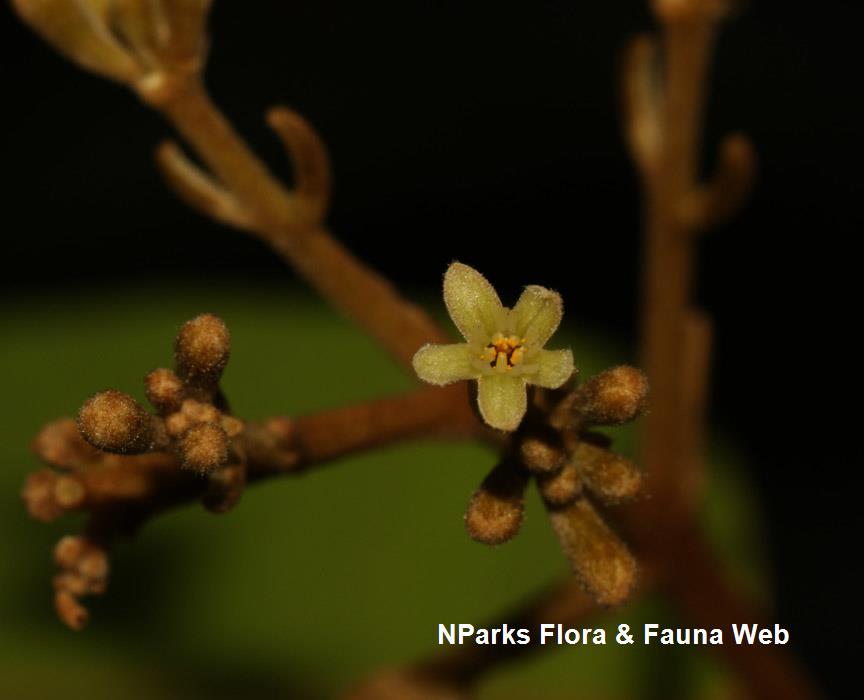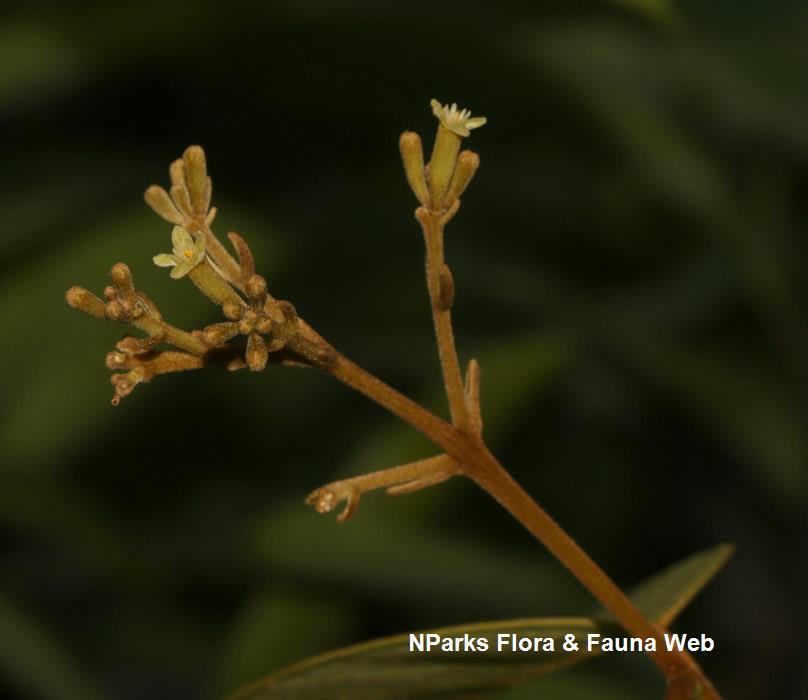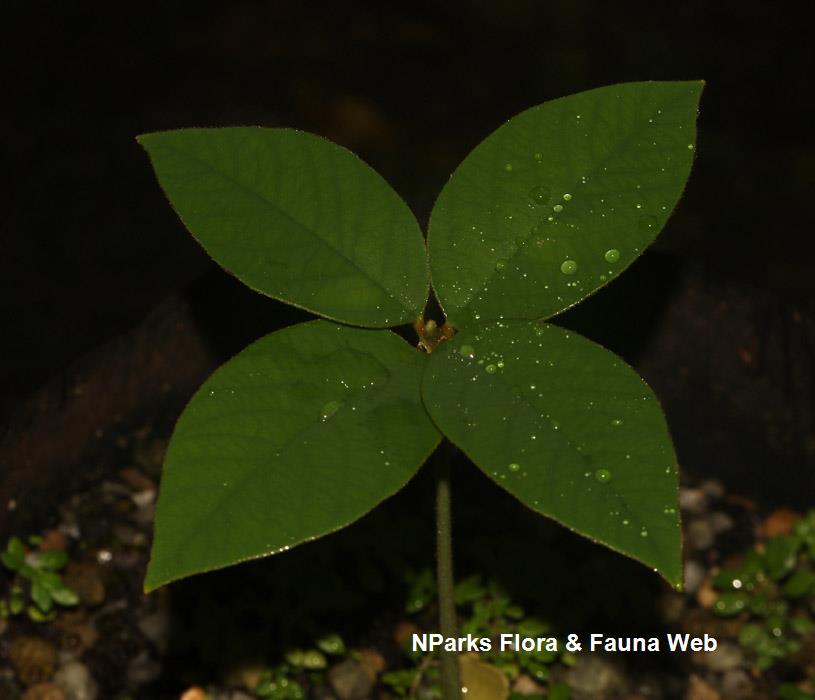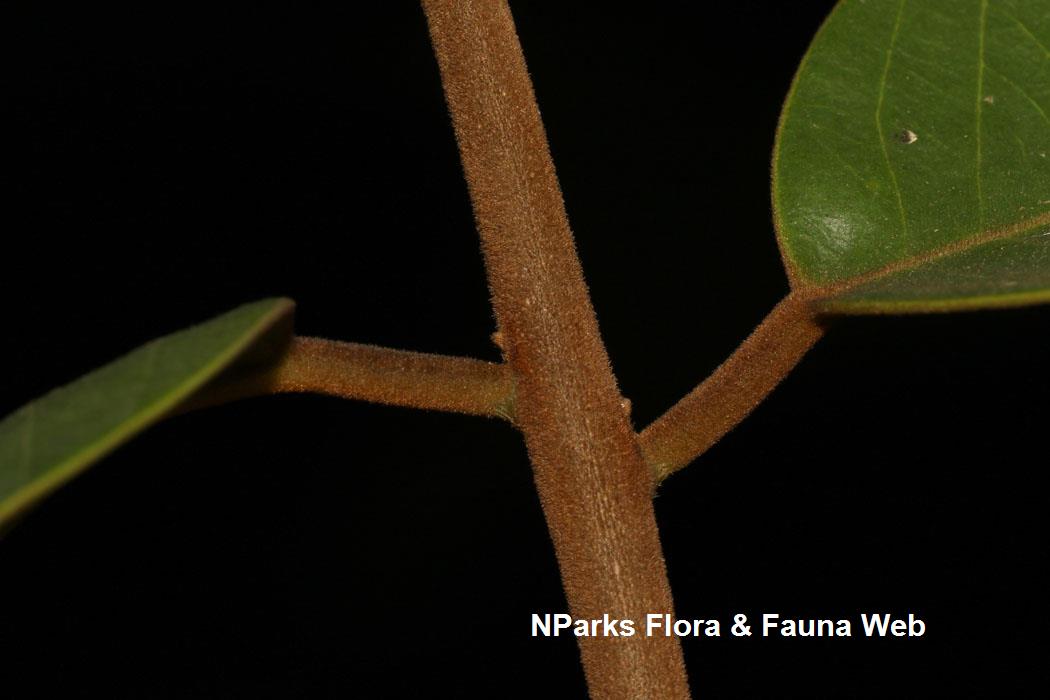_lowres.jpg)
Back
Enkleia malaccensis Griff.
| Family Name: | Thymelaeaceae |
| Synonyms: | Enkleia andamanica, Enkleia coriacea, Enkleia malayana, Enkleia riouwensis, Enkleia siamensis |
| Common Name: | Akar Kareh Hitam, Akar Panas, Akar Puchong Kapor, Garu Buaja, Kapang Akar |
Akar Kareh Hitam (scientifically known as Enkleia malaccensis) is a climber that grows up to 30 m long. It has soft fine hairs on the branches, flowers and young leaves. The flowers are yellowish or whitish, borne on clusters located at the tip of the stem. This plant grows in semi-shade condition in lowland forests, with moderate watering needs.
Name
Classifications and Characteristics
| Plant Division | Angiosperms (Flowering Seed Plants) (Dicotyledon) |
|---|---|
| Plant Growth Form | Climber |
| Lifespan (in Singapore) | Perennial |
| Mode of Nutrition | Autotrophic |
| Maximum Height | 30 m |
Biogeography
| Native Distribution | Andaman Islands, Borneo, Cambodia, Laos, Malaya, Myanmar, Sumatra, Thailand and Vietnam |
|---|---|
| Native Habitat | Terrestrial |
| Preferred Climate Zone | Tropical |
| Local Conservation Status | Native to Singapore (Critically Endangered (CR)) |
Description and Ethnobotany
| Growth Form | A climber that grows up to 30 m in length. |
|---|---|
| Foliage | The leaves are leathery, broadly elliptic, dull green on the upper surface and usually brownish on the under surface. Both surfaces are pubescent (covered with fine soft hairs). Leaf blades are 5.5-14 cm long and 3-7 cm wide, with obtuse or rounded at both tips and the bases. The petioles are pubescent, measuring 6-12 mm long. |
| Stems | The branchlets are reddish brown and often pubescent (covered with fine soft hairs). |
| Flowers | The inflorescences are located on the terminal end of the stems, measuring up to 30 cm long, with paper-like leafy bracts.The flowers are approximately 8 mm long, whitish or yellowish on short pedicels. |
| Fruit | Fruit are ovoid, measuring 1.25 by 0.5 cm. |
| Habitat | It occurs in lowland forests. |
| Ethnobotanical Uses | Others: It is said to give a light scent of 'gaharu' wood, The bast (inner bark) fibres can be used for tying purposes <1>. |
Landscaping Features
| Landscape Uses | General |
|---|
Plant Care and Propagation
| Light Preference | Semi-Shade, Full Sun |
|---|---|
| Water Preference | Moderate Water |
| Plant Growth Rate | Moderate |
| Rootzone Tolerance | Well-Drained Soils |
Foliar
| Foliage Retention | Evergreen |
|---|---|
| Mature Foliage Colour(s) | Green, Brown |
| Mature Foliage Texture(s) | Leathery |
| Prominent Young Flush Colour(s) | Green, Brown |
| Young Flush Texture(s) | Leathery |
| Foliar Type | Simple / Unifoliate |
| Foliar Arrangement Along Stem | Opposite |
| Foliar Attachment to Stem | Petiolate |
| Foliar Shape(s) | Non-Palm Foliage (Ovate) |
| Foliar Venation | Pinnate / Net |
| Foliar Margin | Entire |
| Foliar Apex - Tip | Obtuse, Rounded |
| Foliar Base | Rounded / Obtuse |
Floral (Angiosperm)
| Flower Colour(s) | White, Yellow / Golden |
|---|---|
| Flower Texture(s) | Velvety / Furry / Tomentose |
| Flower Grouping | Cluster / Inflorescence |
| Flower Location | Terminal |
| Flower Symmetry | Radial |
| Individual Flower Shape | Stellate / Star-shaped |
Fruit, Seed and Spore
| Mature Fruit Colour(s) | Brown |
|---|---|
| Mature Fruit Texture(s) | Rough |
References
| References | <1> Ding Hou. (1960). Thymelaceae. Flora Malesiana. pp 25. |
|---|
Image Repository
Others
| Master ID | 30689 |
|---|---|
| Species ID | 5000 |
| Flora Disclaimer | The information in this website has been compiled from reliable sources, such as reference works on medicinal plants. It is not a substitute for medical advice or treatment and NParks does not purport to provide any medical advice. Readers should always consult his/her physician before using or consuming a plant for medicinal purposes. |

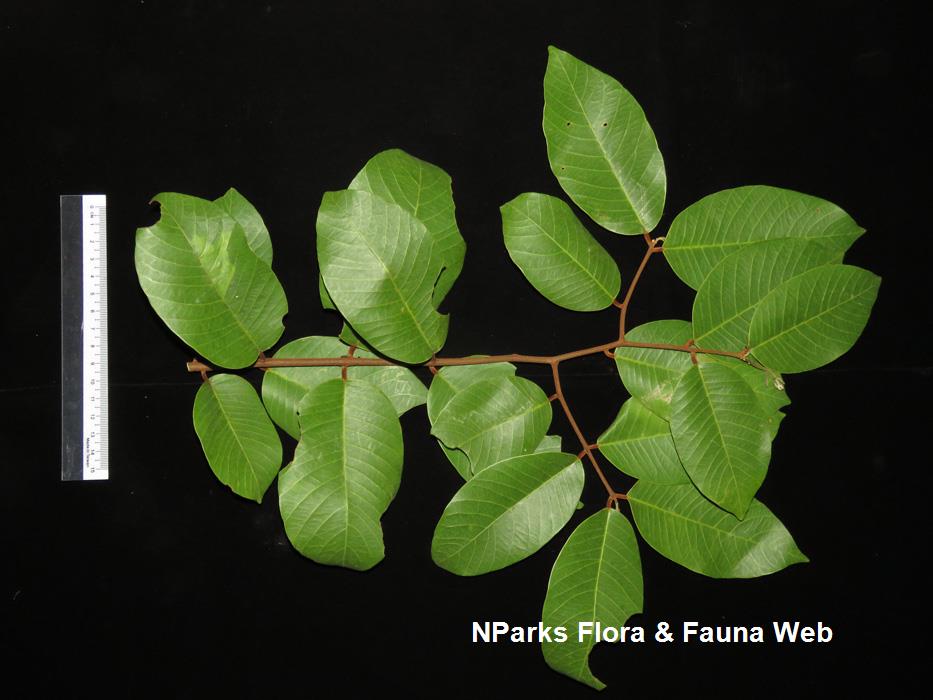
_lowres.jpg)
_lowres.jpg)
